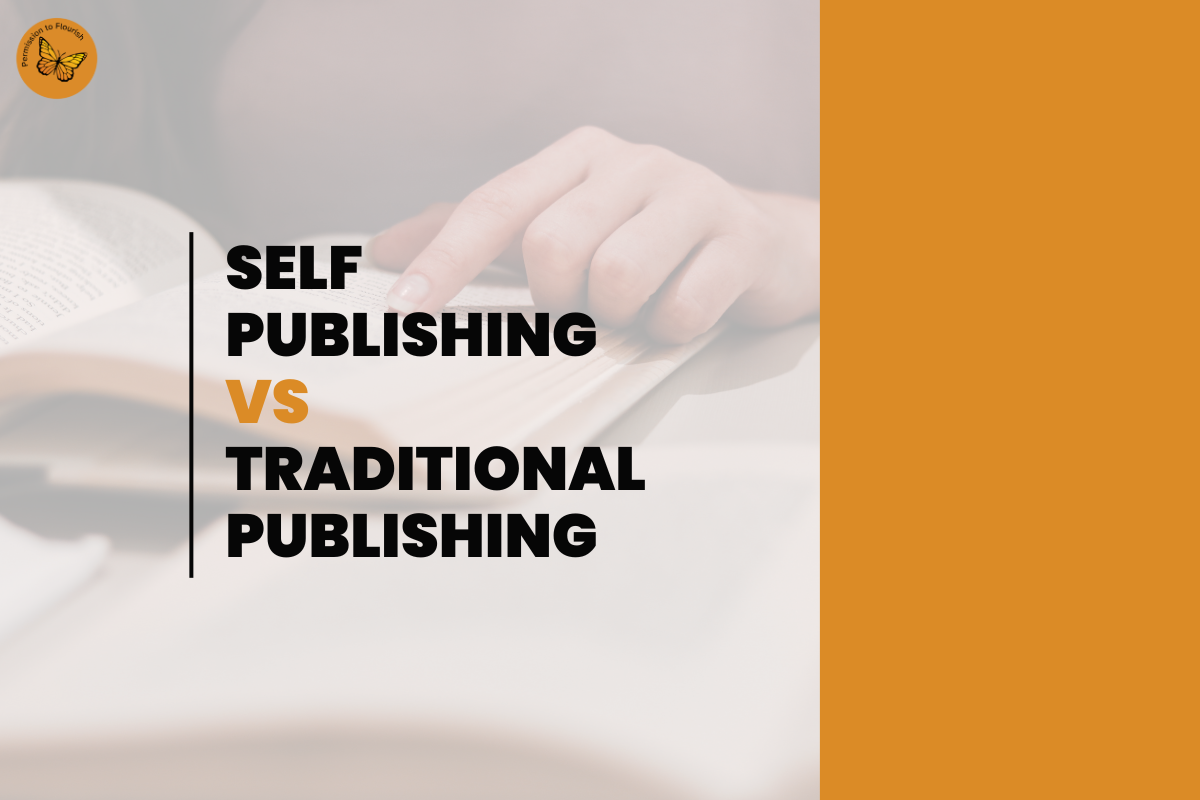📣 Upcoming Event: Fearless Women's Summit, Seattle, WA 2025 – August 16, 2025 at Crowne Plaza Seattle-Downtown, 9am – 4:30pm Let's be a part of this impactful event!!!

Self-Publishing vs. Traditional Publishing: Which One is Right for You?
The publishing industry has expanded to offer writers a multitude of options for getting their work to readers. The publishing industry primarily operates through two main routes consisting of self-publishing and traditional publishing. Authors must evaluate the distinct benefits and difficulties of each publishing path to determine which one best fits their objectives. This blog will analyze the main distinctions between self-publishing and traditional publishing to help you select the best route for your writing career.
Understanding Self-Publishing
Self-publishing provides authors with total command of their writing project across all stages, including writing, editing, and marketing. Publishing platforms such as Amazon Kindle Direct Publishing (KDP), IngramSpark, and Draft2Digital have made it possible for writers to independently publish their books with greater ease than ever.
Pros of Self-Publishing
Authors of self-published works maintain complete control over their book content as well as cover design, pricing choices, and marketing plans.
Self-publishing removes extensive approval procedures, which enables authors to release their books swiftly.
Authors who self-publish can usually earn between 35% and 70% royalties per sale, which is typically higher than what traditional publishing deals offer.
Authors maintain control over their content by having the ability to revise their books whenever needed and test different pricing models while releasing new editions anytime they choose.
Cons of Self-Publishing
Authors are responsible for paying all expenses related to editing services as well as cover design and marketing efforts.
Authors require active promotion efforts because they lack access to the marketing resources provided by publishing houses.
Brick-and-mortar bookstores generally resist stocking self-published works.
Self-published books face skepticism from readers and industry experts who view them as inferior, but this negative perception is declining.
Understanding Traditional Publishing
Traditional publishing starts with authors sending their manuscripts to literary agents or publishing houses, which take responsibility for editing, cover design, printing, marketing, and distribution. Major publishing houses such as Penguin Random House, HarperCollins, and Simon & Schuster and smaller independent presses form part of this publishing route.
Pros of Traditional Publishing
Professional support means authors receive guidance from skilled editors, designers, and marketers to create quality books.
Securing a traditional publishing agreement enhances an author’s credibility while boosting their chances of obtaining media attention and winning awards.
Traditional publishers have built networks with bookstores and libraries across the world, which helps authors reach broader markets.
Publishers finance all expenses related to production and marketing.
Cons of Traditional Publishing
The traditional publishing journey takes years, which includes finding an agent before the book finally appears in stores.
In traditional publishing, authors receive a royalty rate ranging from 5% to 15% for each book sold.
Publishers retain ultimate authority over book cover design and pricing decisions and may also request changes to content.
Aspiring writers often receive multiple rejection letters before they manage to obtain a publishing contract, and some never succeed.
Which One Should You Choose?
Your choice between self-publishing and traditional publishing should reflect your personal goals, available resources, and your willingness to wait. Here are some key considerations:
Self-publishing emerges as the optimal route for those who prioritize control of their work and who are prepared to commit resources to marketing efforts.
Traditional publishing becomes worthwhile for writers who desire professional support together with prestige and broader bookstore distribution.
Self-publishing serves as an effective method for new authors to cultivate an audience before seeking traditional publishing opportunities.
Traditional publishing offers professional support that handles cover design and editing when you choose not to manage those logistics.
Final Thoughts
Self-publishing and traditional publishing each have their own unique benefits and obstacles. Authors cannot rely on a universal approach since some select to self-publish particular titles while seeking traditional publishing agreements for different works. Authors should choose a publishing path that matches their specific objectives as well as their inherent skills and personal expectations.
Do you find yourself, as an author, choosing between self-publishing and traditional publishing? We invite you to post your thoughts and experiences about publishing in the comments section.
Schedule a complementary call with us to go over your requirements and see how we could help you flourish.